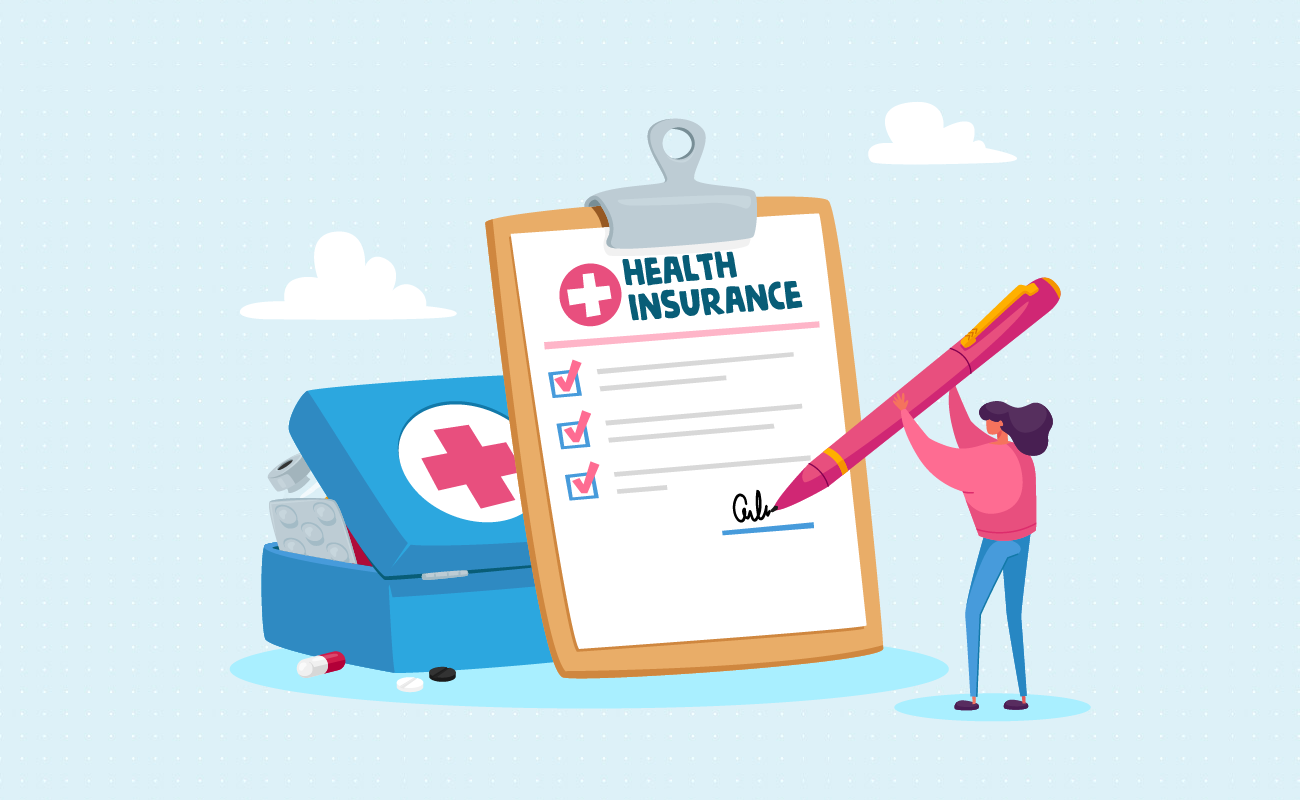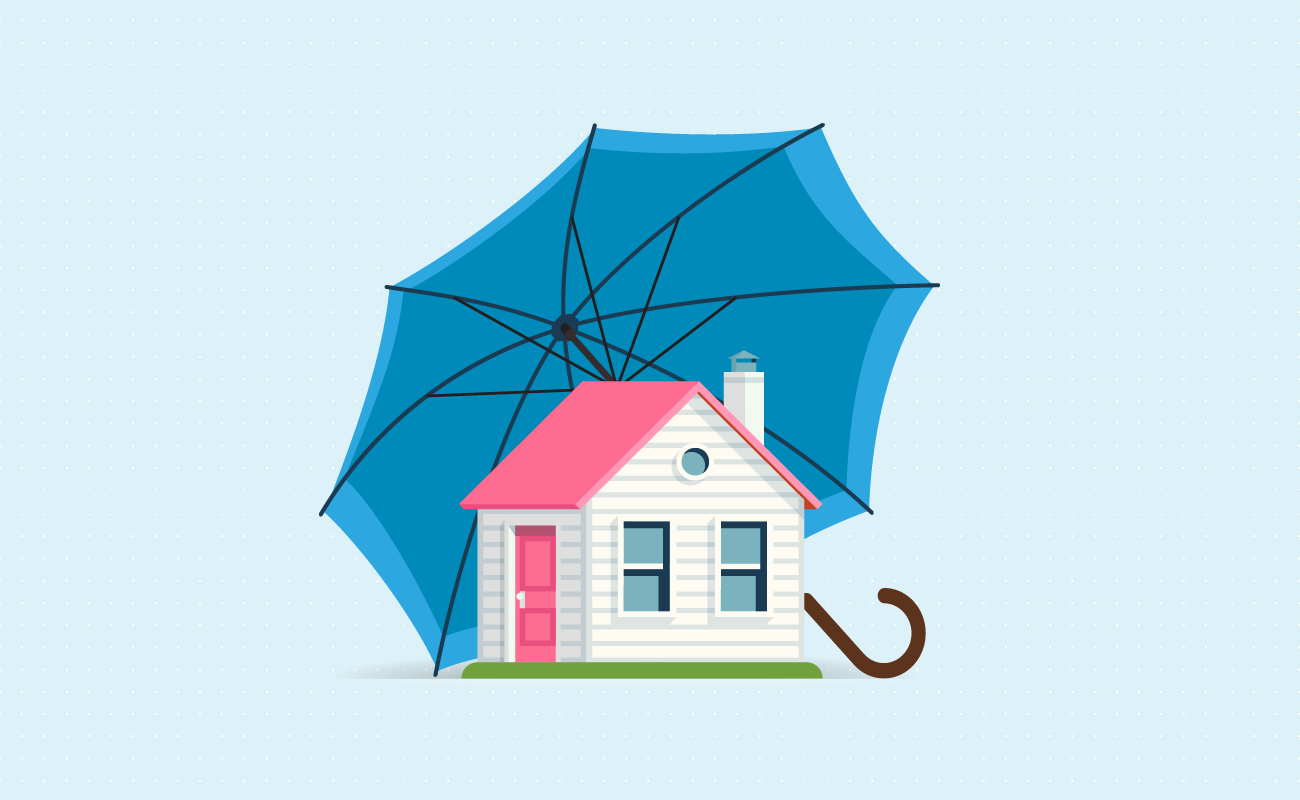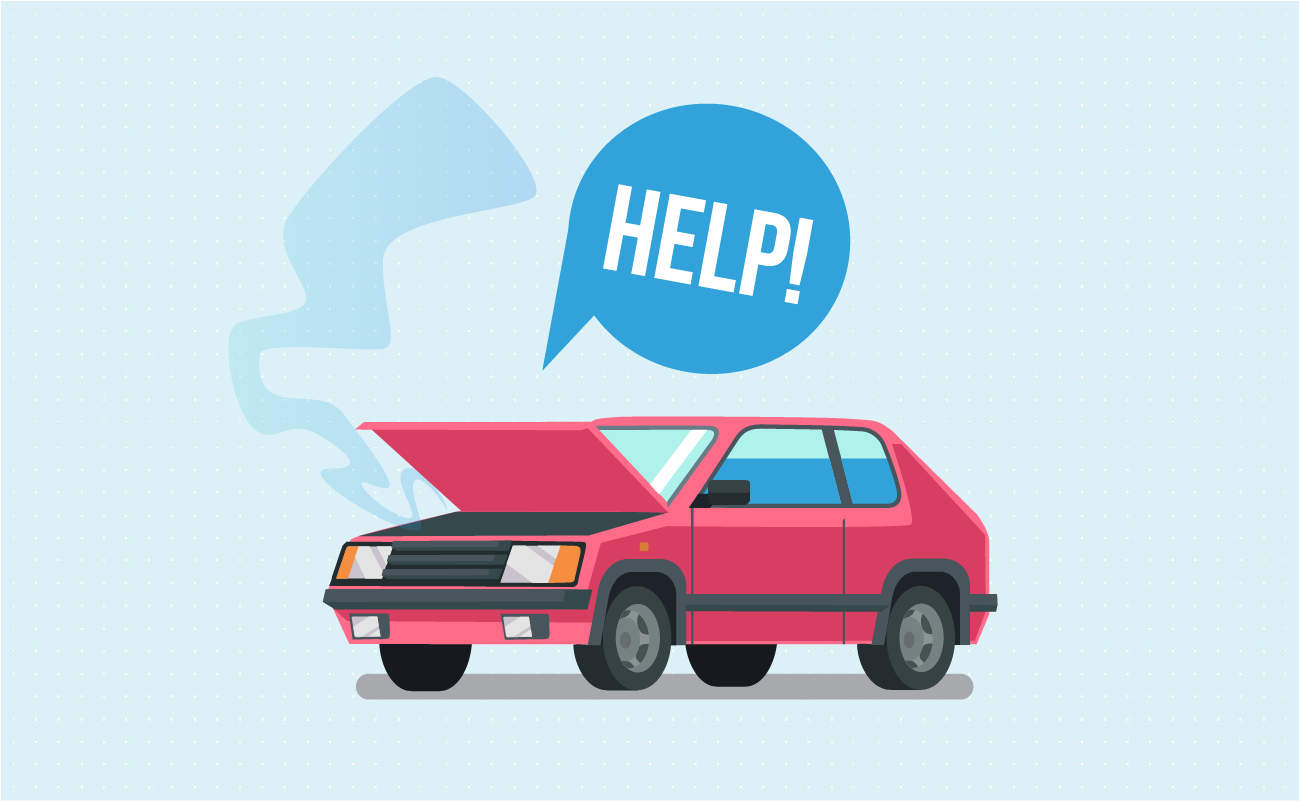Life
 Insurance Calculators
Insurance CalculatorsGuide published by Jose Abuyuan on November 18, 2020

When it comes to insurance plans, not everyone may prioritize getting one. This is typically the case for younger people who are building their income and focusing on other expenses. For other people, they feel they don’t need insurance yet, or find insurance too expensive.
But as you grow older, you’ll realize the importance of investing in major insurance plans. People obtain insurance to protect valuable property such as their homes and cars. In case of unforeseen accidents or economic crisis, insurance covers certain expenses and safeguards you from financial ruin.
Insurance plans can protect your ability to earn income and preserve your business. If you’re the breadwinner of your household, insurance helps secure your family in case of your untimely passing.
Besides building emergency funds, it’s worth investing in major types of insurance for security. Obtaining the right plan with sufficient coverage will benefit you in the long run. Before getting insurance, it’s best to understand your options to secure the right policy.
Our guide will cover vital information on all major insurance categories. It will also provide detailed advice on insurance for cars and businesses. We’ll discuss the average cost of each insurance type and how one’s age can impact insurance expenses. We’ll also explain how much coverage you should get for enough protection. Finally, we’ll talk about policy blind spots, which are things that your insurance might not cover when you get one.
People can insure almost anything these days. It doesn’t just secure property. People can even get flight insurance if they are frequent travelers. But out of many insurance plans out there, you should invest in the following major types of insurance:
The succeeding sections will provide an in-depth discussion of each insurance category.

Healthcare is a large expense for any individual or household. For this reason, people are obliged to obtain health insurance which covers medical expenses for illness and injuries. Health insurance can also cover preventive care. This is when your doctor performs checkups and tests before your condition worsens.
The U.S. spends more on healthcare than any other country in the world. The Centers for Medicare and Medicare Services (CMS) reported that in 2018, national healthcare spending reached $3.6 trillion, which is $11,172 per person. This accounted for 17.7 percent of the country’s gross domestic product (GDP). By 2028, the national healthcare cost is expected to grow to $6.2 trillion.
Every month, you pay a premium for a health plan that promises medical coverage for you and your family. In return, you’re entitled to free or discounted healthcare services for treatments specified under your policy. With insurance, when you visit a clinic or hospital, you’ll only have to pay a portion of the fee. This is called a deductible. Your insurance provider will give you a list of specific deductible treatments to help you keep track.
A deductible is how much you’ll pay for a covered treatment before insurance kicks in. For most plans, once you pay your deductible, you still need to cover copays and coinsurance until you reach the out-of-pocket limit. Higher deductibles are assigned to plans with lower premiums.
Copayment or copay is a set amount you must pay for a particular healthcare service or prescription medicine. This is one way insurance providers split costs after you’ve paid your deductible. Many health plans also have copays for doctor’s visits and prescription medicine before you’ve paid your deductible.
Health insurers also split costs using coinsurance. Unlike copay which requires a fixed cost, coinsurance is a percentage of the cost that you pay for covered services. For instance, if you have a 10 percent coinsurance, you pay 10 percent of the price of covered treatments until you reach your out-of-pocket limit.
Health insurance does not always cover all of your medical bills. Most insurance is designed to share costs with you until a certain amount. This is called the out-of-pocket limit, which caps the amount of money you’ll spend out of pocket on medical bills within a year. Once you reach the out-of-pocket limit, your health insurance will cover all of your medical bills.
As of 2020, the maximum out-of-pocket limit for health plans is $8,200 for individual plans, and $16,400 for family plans. Note that these are limits set by the government for how much insurance providers can legally require for payment. In practice, you can get a health plan with a much lower maximum out-of-pocket limit.
The average cost of U.S. healthcare insurance with a benchmark plan in 2020 is $462 per month or $199 with subsidy, according to the Kaiser Family Foundation (KFF). That’s an average annual cost of $5,544 without subsidy. However, healthcare insurance costs can differ widely per state. For instance, the 2020 average monthly premium in Alaska was $724, while it’s only $375 in Ohio.
Where you live significantly affects the price of health insurance premiums. These are driven by complex factors such as accessibility of healthcare services, state-mandated community ratings, and population density in an area. It’s also due to the number of competing healthcare providers. Moreover, different states impose different levels of taxes and charges that impact health insurance prices.
Though cities have higher medical costs, health insurance premiums can also be higher in rural areas than in urban areas. Cities generally have larger populations that encourage competition among insurance providers. As a result, this lowers premiums for insurance plans. Meanwhile, though rural areas have lower cost of living, they have fewer people spread out in a location. This hinders competition among insurance providers, which can keep health insurance premiums high.
The table below shows monthly average health insurance premiums per state without subsidy, from 2018 to 2020:
| Location | 2018 | 2019 | 2020 |
|---|---|---|---|
| The Whole of U.S. | $481 | $477 | $462 |
| Alabama | $558 | $546 | $553 |
| Alaska | $726 | $702 | $724 |
| Arizona | $516 | $471 | $442 |
| Arkansas | $364 | $378 | $365 |
| California | $430 | $435 | $430 |
| Colorado | $470 | $488 | $358 |
| Connecticut | $545 | $475 | $570 |
| Delaware | $589 | $684 | $548 |
| District of Columbia | $324 | $393 | $414 |
| Florida | $466 | $477 | $468 |
| Georgia | $483 | $487 | $463 |
| Hawaii | $438 | $493 | $474 |
| Idaho | $478 | $498 | $520 |
| Illinois | $486 | $478 | $451 |
| Indiana | $339 | $339 | $387 |
| Iowa | $713 | $762 | $742 |
| Kansas | $518 | $552 | $502 |
| Kentucky | $422 | $460 | $471 |
| Louisiana | $474 | $454 | $500 |
| Maine | $588 | $544 | $513 |
| Maryland | $487 | $419 | $397 |
| Massachusetts | $316 | $332 | $343 |
| Michigan | $381 | $383 | $360 |
| Minnesota | $385 | $326 | $309 |
| Mississippi | $519 | $521 | $487 |
| Missouri | $529 | $499 | $483 |
| Montana | $525 | $561 | $483 |
| Nebraska | $767 | $838 | $711 |
| Nevada | $432 | $410 | $374 |
| New Hampshire | $475 | $402 | $405 |
| New Jersey | $413 | $352 | $392 |
| New Mexico | $414 | $365 | $345 |
| New York | $506 | $569 | $610 |
| North Carolina | $627 | $618 | $558 |
| North Dakota | $377 | $457 | $383 |
| Ohio | $371 | $380 | $375 |
| Oklahoma | $659 | $696 | $601 |
| Oregon | $414 | $443 | $446 |
| Pennsylvania | $575 | $484 | $459 |
| Rhode Island | $311 | $336 | $332 |
| South Carolina | $520 | $552 | $509 |
| South Dakota | $521 | $557 | $593 |
| Tennessee | $743 | $548 | $511 |
| Texas | $434 | $444 | $432 |
| Utah | $550 | $542 | $486 |
| Vermont | $505 | $622 | $662 |
| Virginia | $535 | $555 | $521 |
| Washington | $336 | $381 | $391 |
| West Virginia | $545 | $596 | $628 |
| Wisconsin | $569 | $537 | $491 |
| Wyoming | $865 | $865 | $881 |
Data from Kaiser Family Foundation Marketplace Average Benchmark Premiums
Based on the table above, the top states with the highest health insurance premiums in 2020 are Alaska ($724), Iowa ($742), and Wyoming ($881). States with smaller populations typically don’t have as many doctors and hospitals, which reduces accessibility to medical care.
As a result, insurance providers do not have as much negotiating capability on insurance rates. Meanwhile, they do so in locations with higher populations and healthcare availability. States with smaller risk pools are also more vulnerable to premium rate volatility. For example, a $5 million claim is going to have a greater impact if there are only 60,000 people versus 600,000 people in the risk pool.
When it comes to health insurance, women are generally charged a higher premium than men. This is because their risk perception is higher. Women have the tendency to take doctor visits more frequently. They also give birth, which is a sensitive condition that requires careful monitoring and hospital care. Finally, women tend to live longer than men, which increases premium costs.
In 2015, the Kaiser Family Foundation with the Journal of American Medical Association reported that American women spent more than men on healthcare. According to the study, women aged 19 to 34 spent an average of $3,402 for medical care, while men only spent $1,891. Women are also likely to spend a lot on healthcare during their most reproductive years and when they get older. The table below shows average health spending per capita by age and gender.
| Age | Women | Men |
|---|---|---|
| 19-34 | $3,402 | $1,891 |
| 35-44 | $4,717 | $2,518 |
| 45-54 | $5,908 | $4,825 |
| 55-64 | $9,489 | $7850 |

Most states base premiums on the policy holder’s age. Twenty-one is used as the base age, with premiums adjusted higher as you reach your 30s, 40s, 50s, and 60s. People tend to have more serious medical issues as they age. The largest rate increase occurs for policy holders beyond the age of 50, when people typically report ageing-related health disorders.
On the other hand, states like New York and Vermont do not use age to estimate health insurance premiums. Instead, they use a community rating which requires you to pay the same premium regardless of age. Thus, a 21 year-old is subject to pay the same premium as a 60 year-old. If you’re in your 20s, you’re likely to pay more for health insurance in New York and Vermont than you would in a different state.
Your health insurance’s deductible and out-of-pocket limit are based on whether you take an individual or family plan. An individual plan only covers medical expenses for one person. Family plans cover two people or more. When you add your partner or children into a plan, your monthly payment increases. If you have more than three children under 21 years of age, you only need to pay coverage for your three oldest kids.
The Kaiser Family Foundation reported that the average annual premium in 2019 for a single healthcare coverage was $7,188. Meanwhile, the average annual family healthcare insurance was $20,576 in 2019. Based on this data, the average family healthcare premium is almost three times more costly than single coverage plans.
It’s important to note, however, that the size of your family does not always mean you’ll spend more for medical services. A healthy family could still spend less than an aging couple with multiple chronic ailments.
Health insurance plans are classified into different metal tiers according to the coverage and proportion of healthcare costs. Among the tier types, Platinum plans provide the greatest amount of coverage, which typically pays for 90 percent of medical bills.
Tier types that offer the smallest coverage are Bronze plans and Catastrophic plans. These come with the highest deductibles, copays, and coinsurance costs. Likewise, Platinum plans are the most expensive while Bronze plans are marketed as the most affordable. Other plan categories are Silver, Gold, and Expanded Bronze.

Catastrophic plans offer the lowest cost for healthcare coverage. It’s a good fit for young and healthy individuals who want to secure their condition in case of accidents. Catastrophic plans are only offered to applicants under 30 years of age, and for people who have a hardship exemption.
The following table shows an example of annual and monthly health insurance premiums for a 40-year old applicant in 2020. It’s grouped according to tier type.
| Tier Type | Annual Premium | Monthly Premium |
|---|---|---|
| Catastrophic | $3,878 | $323 |
| Bronze | $4,976 | $415 |
| Expanded Bronze | $5,141 | $428 |
| Silver | $6,723 | $560 |
| Gold | $7,409 | $617 |
| Platinum | $8,787 | $732 |
The next table details the estimated percentage each insurance tier pays versus your out-of-pocket costs:
| Tier Type | % of Bills Your Plan Pays | % You Pay Out of Pocket |
|---|---|---|
| Bronze | 60% | 40% |
| Silver | 70% | 30% |
| Gold | 80% | 20% |
| Platinum | 90% | 10% |
Based on the table, you pay the most with a Bronze plan, which only covers 60 percent of your healthcare bills. As the tier type gets higher, it covers more of your medical bills, so your out-of-pocket expenses get lower. Thus, the Platinum plan covers around 90 percent of your medical expenses, which is the most coverage for health insurance.
When choosing a healthcare plan, consider if you or your family members have recurring medical issues. Check the type of health conditions you’re dealing with. This will indicate if you need repeated checkups or require specific treatments. The more hospital visits you need, the more likely you’ll benefit from a wider coverage. Likewise, avoid costly medical plans if you’re young and healthy.
For people who rarely go to a hospital, a plan with a low premium makes better sense. This especially comes in handy during emergencies like an accident or illness that requires hospitalization. If you’re young and healthy, avoid expensive insurance plans. You likely don’t need a Platinum coverage.
Instead, you may opt for a Bronze plan. This is a good fit for people who rarely get sick and usually come for annual checkups. Take note: You can end up paying more with a Bronze plan if you eventually need regular doctor visits. Again, insurance with low premiums come with the highest copays and coinsurance costs. If you can afford it, you can upgrade your plan if you or a family member is due to give birth or needs surgery.
Meanwhile, if you’re managing chronic conditions (e.g. asthma, diabetes, heart problems, high blood pressure, etc.) health insurance with a higher premium will work better for you. Just make sure you get a plan with lower out-of-pocket expenses. A lower out-of-pocket limit will provide coverage for medical services at a more affordable cost.

The most affordable health plan is not necessarily the one with the lowest premium. It’s the plan that provides the most sufficient health coverage, depending on your medical condition, at the best rate.
A Silver plan is a good choice if you have one or two family members with a mild chronic condition. These are ailments that do not need frequent monitoring or hospital care. Silver plans are also a viable option if you have active kids who play sports and are prone to injuries.
Gold plans, on the other hand, are for people with chronic ailments that need regular doctor visits and expensive medication. It’s usually for older people who are prone to colds and flu. Gold plans are also a good choice if you have preschool-age children who require frequent visits to the pediatrician.
Lastly, Platinum plans are most appropriate if you or a family member have costly chronic ailments. This is usually taken by older patients who are highly prone to illness and injury. Consider this if the condition requires several medications, close monitoring, and frequent hospital visits. If you need urgent or emergency care at least once a year, or require regular tests to manage your condition, you’ll benefit from a Platinum plan.

Health insurance is offered by many providers in the U.S. The most affordable one you can get is Medicaid, which requires you to apply in the federal insurance program. To qualify, your household income should be equal to or under 113 percent or 138 percent of the federal poverty line (FPL). The specific qualification level depends on which state you reside. Certain states have passed laws to expand the Medicaid program to lower income applicants.
To apply for Medicaid, contact your nearest state Medicaid agency or fill out an application form through the Health Insurance Marketplace. This service helps people search and apply for health plans. It’s operated by the federal government through HealthCare.gov for most states. Other states also manage their own health insurance marketplace.
If you’re not eligible for Medicaid, you can obtain affordable health insurance with complete medical coverage through your state health insurance marketplace. You can obtain a marketplace policy if you currently don’t have medical coverage from your employer or federal government.
For most low-income families, a Silver plan from a health insurance marketplace provides the most affordable coverage because of cost-sharing reductions. These reductions lower your payments across premiums, deductibles, and out-of-pocket maximum limits.
The most expensive insurance you can obtain from a state marketplace is a Gold plan. Though they have high premiums, they provide the cheapest deductibles and out-of-pocket maximums. If you’re anticipating costly medical bills every year, getting a Gold plan can help you save money.
A premium tax credit can be used to lower your monthly insurance premium when you take a plan from the marketplace. You can apply for a tax credit in advance or take the tax credit when you file your annual tax return.
Take note: Tax credits are only granted to individuals and families that fall within a prescribed income range. This is typically between 100% to 400% of the federal poverty line (FPL) for your household size in your state. Moreover, premium tax credits are only provided for marketplace insurance plans. These cannot be used for catastrophic plans, off-exchange private health plans, or public health insurance plans.
When you compare health insurance providers, you’ll notice that some companies offer much affordable rates than others. Such providers may not provide policies with as much extra benefits as other plans. Consider this if you’re shopping for a good coverage for your family.
For example, some of the most affordable health insurance providers for Silver plans in the marketplace are Ambetter, Blue Cross Blue Shield, and Kaiser Permanente. Make sure to compare their benefits to see which have added benefits that you prefer.
Furthermore, note that a “full coverage” means a policy includes the 10 essential health benefits required under the Affordable Care Act. Health policies should cover the following medical services:

Most insurance companies can provide benefits beyond these 10 essential services. Make a list of healthcare services you need and talk to your insurance provider. They can confirm if your request can be fully or partially covered.

Despite comprehensive health coverage, you might be surprised to find that your medical plan does not cover certain prescriptions and medical procedures. Here’s a list of healthcare services that are usually not covered by insurance:
Employer-sponsored health insurance (ESI) is one of the most common health plans used in the U.S. When the COVID-19 crisis affected the country, many people lost healthcare coverage and were forced to pay medical bills out-of-pocket. Between mid-March to June 2020, 49 million people filed for unemployment due to the COVID-19 crisis. People lost insurance benefits they could have used for medical care. And as with any health emergency, it’s hard to afford hospital bills if you don’t have health insurance or if you’re underinsured.
If you need assistance with medical expenses, here’s a list of several organizations that can help cover healthcare costs:
HealthWell is a non-profit that helps underinsured patients gain access to proper medical care in the U.S. They assist people with insurance premiums, deductibles, copays, and out-of-pocket medical expenses. They also help cover costs for prescriptions as well as Pediatric treatment. To see if you’re eligible for assistance based on your medical condition, visit their disease funds page. In 2019, HealthWell was able to provide more than $610 million in grants.
The NAFC provides a data base for free and charitable clinics throughout the country. They aim to support medically underserved people in different communities. When patients are underinsured, regular clinics and pharmacies limit their access to healthcare services and prescription medication. But by searching through the the NAFC data base, these people can find the nearest healthcare facility that provides free services. Healthcare volunteers are welcome to serve at the clinics or donate funds and medical supplies.
The PAN Foundation’s mission is to assist underinsured patients with life-threatening chronic and rare diseases. They help people obtain the necessary medication and treatment by providing financial assistance, helping them cover out-of-pocket costs. The PAN Foundation also promotes access to affordable healthcare services. To check if you qualify for PAN’s program, visit their application page. Since 2004, PAN has provided aid to almost 1 million underinsured people, amounting to around $3 billion in financial assistance.
NeedyMeds is a non-profit that aids patients who cannot afford medical treatment and prescription drugs. They offer medical information service, enabling people to find programs that can address their specific needs. For instance, you can search save on prescriptions for drug names, or get assistance for medical transportation costs. You can also obtain information about government healthcare programs, as well as search COVID-19 programs and services by state.
If you are a senior or person aged 50 years old and up, joining the AARP entitles you to certain health benefits. AARP members can get comprehensive dental, hearing, and vision insurance plans. These come with affordable costs and discounts. You can also obtain prescription discounts. This can help you save up to 61 percent on FDA-approved prescriptions not covered by your insurance. The medication benefit is available to members, their spouses, and dependents.

As of 2020, LIMRA’s Insurance Barometer Study reported that life insurance ownership in the U.S. fell by 9 percentage points in the past 10 years. In January 2020, 46 percent of American adults did not own life insurance, while 54 percent owned one. The study together with Life Happens also found that 44 percent of people would feel the financial impact within six months after the family’s primary bread winner dies. Around 28 percent said they would feel the impact within a month.
Even low life insurance ownership, the survey reported high intent to purchase life insurance at 36 percent. This is the highest the survey has recorded. However, despite people’s goal to secure life insurance within the next 12 months, many did not have one during the peak of the COVID-19 pandemic.
Respondents cited top reasons for not purchasing life insurance. Around 67 percent said they have other financial priorities, 65 percent said it was “too expensive,” and 56 percent felt they didn’t need it. Meanwhile, 52 percent said they were unsure what type to get and how much to pay, 43 percent said they haven’t gotten around to it, and 42 percent said they didn’t like thinking about death.
| Top Reasons for Not Obtaining Life Insurance | Percent of Respondents |
|---|---|
| Have other financial priorities | 67% |
| It’s too expensive | 65% |
| Don’t feel I need any | 56% |
| Unsure of how much/what type to buy | 52% |
| Haven’t gotten around to it | 43% |
| Don’t like thinking about death | 42% |
Meanwhile, the following table details the top reasons why people secure life insurance.
| Top Reasons for Owning Life Insurance | Percent of Respondents |
|---|---|
| Paying for one’s burial costs and final expenses | 84% |
| Transfer of wealth across generations | 66% |
| Replace lost wages/income | 62% |
| Supplementing retirement income | 57% |
| Paying off mortgage | 50% |
Life insurance guarantees your surviving dependents and other beneficiaries receive a death benefit when you die. The benefit payment is assured in exchange for regular premium payments or a one-time upfront premium payment. This helps get things in order, so your loved ones don’t have to worry about funeral expenses and final costs. If you have dependents relying on you, life insurance helps transfer your wealth and supplement their income when you’re gone.
For people who don’t have life insurance, you might think that your beneficiaries will still have to pay income taxes on the death benefit. This is a common misconception which is false. Life insurance proceeds are non-taxable and do not need to be reported to the IRS. However, any interest received on your claim is taxable, which should be reported.
Life insurance policies have two main elements. These are the death benefit and the premium, which are features in a term life policy. On the other hand, permanent or whole life policies come with a third component which is the cash value.

For permanent or whole life insurance, though the insurer absorbs the cash value when you die, there is an exception. You can purchase a rider (an additional benefit that requires extra premium payments) on your policy that specifies your beneficiaries should receive both the cash value and face value.

The premium rate for life insurance is based on a person’s life expectancy. This is influenced by different factors such as age, gender, your health condition, and whether you’re a smoker. Essentially, the healthier you are, the more affordable your premium will be. You can expect a lower premium if you apply at a younger age.

Avoid smoking to lower your life insurance costs. Just like health insurance, if you’re a smoker, you’ll pay higher insurance premiums. Since smoking causes lung disease and a host of other ailments, it evidently shortens your life span. This increases risk for insurance companies. Depending on your insurance provider, you can pay up to 215% more for life insurance compared to non-smokers.
Insurance providers usually group policy applicants into risk categories such as standard, preferred, and super preferred. Super preferred is the healthiest class, while standard is considered the riskiest. Your insurance premium is then calculated based on your risk class.
Another major factor that affects cost is the type of insurance you obtain. People choose between the two main types of policies:
The following table shows the annual health insurance premiums comparing risk class, age, and gender. It’s based on a 20-year term life policy worth $500,000 in 2020.
| Gender | Age | Super Preferred | Preferred | Standard |
|---|---|---|---|---|
| Men | 30 | $229 | $293 | $422 |
| Men | 40 | $341 | $425 | $670 |
| Men | 50 | $842 | $993 | $1,564 |
| Women | 30 | $193 | $232 | $355 |
| Women | 40 | $290 | $354 | $523 |
| Women | 50 | $654 | $776 | $1,163 |
The table shows that super preferred applicants have the lowest life insurance premiums compared to preferred and standard applicants. Likewise, premiums increase as the applicants age. You’ll also notice that men are charged a higher premium than women.
How much more will you pay for a whole life policy than a term life option? The following table is based on a super preferred male applicant with a 20-year term policy worth $250,000, and whole life policy worth $100,000.
| Age | Average Term Life Insurance Per Month ($250,000) | Average Whole Life Insurance Per Month ($100,000) | How much more expensive is whole life insurance? |
|---|---|---|---|
| 20 | $15.90 | $85.45 | 5.4 times more expensive |
| 30 | $16.14 | $122.20 | 7.6 times more expensive |
| 40 | $21.75 | $196.25 | 9.0 times more expensive |
| 50 | $47.86 | $233.94 | 4.9 times more expensive |
According to the table, the most affordable average monthly premium is $15.90 when you get a term life insurance at 20. This increases to $85.45 if you take a whole life insurance instead. The average monthly premium increases as the applicants grow older. By age 50, the average monthly term life insurance is $47.86. This increases to a staggering $233.94 if you take a whole life policy at 50.

Insurers take on lesser risk when they guarantee a younger person in excellent health. They are less likely to pay out a claim when the policy holder is younger. Thus, people usually get the best rates when they apply in their 20s and 30s. On the other hand, premiums increase the most as you age, especially at 50 onwards.
Generally, life insurance policy premiums are lower for women than in men. This is because risk perception for men is a lot higher, with men typically having shorter life spans than women. According to the Population Reference Bureau’s 2020 data, men have an average life expectancy of 76 in the U.S., while women’s average life expectancy is 81.
Men are also involved in more car accidents than women. In a long-term study from 1975 to 2015, the Insurance Institute for Highway Safety (IIHS) reported that twice as many men died in car accidents than women. The same study found that 71 percent of car accident casualties were men, while only 29 percent represented women.
The following table shows rates based on a $500,000 policy for super preferred applicants in 2020. It breaks down annual rate differences for both men and women.
| Age | Men’s annual cost, 20-year term life | Women’s annual cost, 20-year term life | Men’s annual cost, whole life | Women’s annual cost, whole life |
|---|---|---|---|---|
| 30 | $229 | $193 | $3,600 | $3,195 |
| 40 | $341 | $290 | $5,412 | $4,825 |
| 50 | $842 | $654 | $8,432 | $7,522 |
The table shows that across all ages and insurance types, men are charged higher life insurance rates than women. Men’s shorter life expectancy drives insurance providers to charge more premiums. Insurance companies are more likely to pay a claim on a men’s life insurance compared to women.

Next, how frequently you travel may also affect the cost of your life insurance. For instance, if you happen to travel a lot for your work, you might be perceived as a high-risk applicant. It you tend to go to remote locations and participate in high-risk activities like rock climbing or bungee jumping, you are seen as a high-risk applicant. Certain countries are also regarded as high-risk locations, such as Africa where malaria is prevalent.
However, not all states consider traveling a factor that should affect your life insurance. Here’s a list of states that do not use travel frequency as a basis for determining life insurance premiums:
Note that every state has the prerogative to regulate insurance companies however they see fit. Most states have similar laws and protections in place. But to know if certain rules apply or not, make sure to ask your insurance provider.
The following table details average annual life insurance premiums per household, per state. This is based on figures from the S&P Global Market Intelligence and Claritas in 2019. The data was taken from ordinary premiums from the National Association of Insurance Commissioners (NAIC) regulatory statements.
| State | Average annual premium |
|---|---|
| Alabama | $899 |
| Alaska | $1,665 |
| Arizona | $753 |
| Arkansas | $685 |
| California | $1,084 |
| Colorado | $991 |
| Connecticut | $1,367 |
| Delaware | $2,553 |
| Florida | $990 |
| Georgia | $954 |
| Hawaii | $1,492 |
| Idaho | $710 |
| Illinois | $1,165 |
| Indiana | $764 |
| Iowa | $1,089 |
| Kansas | $960 |
| Kentucky | $676 |
| Louisiana | $1,005 |
| Maine | $560 |
| Maryland | $1,018 |
| Massachusetts | $1,139 |
| Michigan | $815 |
| Minnesota | $1,809 |
| Mississippi | $824 |
| Missouri | $867 |
| Montana | $678 |
| Nebraska | $1,118 |
| Nevada | $837 |
| New Hampshire | $859 |
| New Jersey | $1,510 |
| New Mexico | $574 |
| New York | $1,292 |
| North Carolina | $910 |
| North Dakota | $1,060 |
| Ohio | $822 |
| Oklahoma | $666 |
| Oregon | $594 |
| Pennsylvania | $1,002 |
| Rhode Island | $819 |
| South Carolina | $847 |
| South Dakota | $2,652 |
| Tennessee | $838 |
| Texas | $896 |
| Utah | $1,176 |
| Vermont | $728 |
| Virginia | $916 |
| Washington | $690 |
| Washington, D.C. | $804 |
| West Virginia | $591 |
| Wisconsin | $848 |
| Wyoming | $1,357 |
Generally, the older people get, the less coverage they need. This is assuming you have less debts and family members to support. However, expect to be charged a higher premium when you apply at a later age. Rates for life insurance increase between 4.5 percent to 9 percent each year as you get older. Thus, it’s ideal to start purchasing one when you’re young and healthy, while premiums are much more affordable.
Term life insurance is the more practical option. For instance, let’s say you’re a healthy 30 year-old man living in Ohio. In October 2020, you can get a 20-year term life insurance at $750,000 with an average monthly premium of $38.26.
Exactly how much should your policy cover? The answer largely depends on your financial situation, such as how much you earn, how many people you’re supporting, as well as how large your debts are. But as a rule, financial advisors recommend aiming for a life insurance policy with 10 to 15 times your income.
To estimate how much coverage you need, here are basic calculations you should do:
Prioritize how much you need to replace your income, including your dependent’s future needs. For instance, if you have kids, talk to your insurance agent about how much you should leave to help send them to college. As of October 2020, Policygenius reported that people in their 30 to 50s commonly bought policies between $250,000 to $1 million worth of coverage.
One of the most important primary cost in your coverage is end-of-life expenses. According to Parting.com, the average traditional North American funeral costs between $7,000 to $10,000. This range includes funeral services, cemetery burial, and headstone installation. It ensures your loved ones are not troubled with financial worries while dealing with their grief.
Another crucial thing to prepare for are debt payments. If you pass away with outstanding debt obligations, your dependents may be liable for part or all of your co-signed loan. Make sure you leave enough funds that will help them cover important payments such as your mortgage. You should also leave enough money for emergencies, so they have extra financial cushion.
If you have tight finances, it’s understandable if you have a hard time obtaining life insurance. But again, a more affordable option is term life insurance. You can lessen the cost by getting a shorter term length or a lower face value. This is better than not having life insurance at all. When choosing life insurance, try to compare premiums between providers to see which one is cheaper. According to Reviews.com, some of the most affordable life insurance companies in 2020 are Principal Financial, Guardian Life, Mutual of Omaha, State Farm, and Nationwide.

For the most part, life insurance allows you to choose whoever you want as a beneficiary. However, depending on which state you reside, there are rules that require your spouse to sign a waiver if they are not the main beneficiary. These areas follow community property laws where life insurance is regarded as a kind of property. States that adhere to community property laws are the following:
Next, the state in which you live can affect whether your beneficiaries, particularly children under the age of 18, can receive your death benefit. States like Nebraska and Alabama require beneficiaries to be at least 19 years old, while Mississippi requires beneficiaries to be 21 years old. If you entrust your benefit to a minor, they will likely have problems claiming the money. In many cases, an insurance company cannot pay the death benefit until the court appoints a guardian, further delaying the payout.

If you plan on leaving your death benefit to a minor, it’s ideal to set up a life insurance trust. This is an irrevocable trust arranged with a life insurance policy as the asset. A trust holds money and property for beneficiaries including your kids. You determine how these assets should be used and you appoint a qualified trustee to manage the process.
Furthermore, how you die determines whether your dependents receive benefits or not. It also matters if you pay your premium on time. Take note of the following circumstances that can hinder your loved ones from claiming your death benefit.
Unfortunately, a loved one may pass away before they can secure life insurance. When this happens, you can turn to non-profit organizations for financial assistance to cover funeral and burial expenses. Your state can also provide financial relief after losing a loved one. Here are a few organizations that can help:
Final Farewell focuses on providing financial assistance for families burying a child or anyone under 18 years old. They may even cover full funeral expenses for the most financially challenged families. They negotiate with funeral homes on behalf of families to get a good price. They help all families from different religions and backgrounds throughout the country. Final Farewell obtains funding from multiple sources such as private donors, fundraisers, and government grants.
This is another nonprofit that helps families cover burial costs for deceased children (under 18 years old). They offer financial aid to pay for burial plots, grave fees, as well as cremation expenses. Children’s Burial Assistance volunteers have good connections with funeral service providers, crematoriums, and casket making companies. This helps them obtain affordable prices for burial services. This organization has helped more than 1,000 families save over $900,000 in funeral costs.
The Funeral Consumers Alliance (FCA) provides awareness of different funeral options that will help you save money. They work with the funeral industry to advocate for fair prices, especially for those who have tight finances. Their goal is to ensure people are fully prepared and protected when it comes to planning a funeral for themselves and their loved ones. If you need guidance and financial concerns about services in a funeral home, contact the FCA.
If your deceased family member was a veteran or active-duty military member, the Veterans Administration (VA) will provide you with financial assistance for funeral expenses. The VA can also offer financial aid to spouses and minor children of fallen veterans. Surviving family members are entitled to receive a tax-free burial allowance. This is worth $300 for a non-service related death, and up to $2,000 in case of a service-relate death. Families also have the option to bury their loved at a state or national military cemetery.
The Federal Emergency Management Agency (FEMA) can cover partial funeral costs for people who died due to major disasters or emergencies. FEMA can pay for urns or caskets, mortuary services, and related transportation services. The organization can also cover cremation, headstone installation, and reinternment. To qualify for financial assistance, you must submit documents to FEMA verify the deceased’s state of residence. You should also not receive aid from other organizations.

Property insurance protects your home and personal belongings against uncertain damage or loss. While it doesn’t actually prevent damage to your house or apartment, it provides a financial safety net in case unfortunate events occur. For instance, in case of fire, water damage, or theft, insurance can help restore your losses financially.
When you pay monthly premiums for home or renters insurance, it guarantees that the company will bear a significant cost of the damage or loss in the future. If you have property insurance, it can fully pay or cover partial expenses needed to reinstate your property.
The Insurance Information Institute (III) reported that 95 percent of homeowners in the U.S. had home insurance in 2016. While it isn’t legally required, when you take out a mortgage, lenders require some form of insurance coverage for your house.
Meanwhile, renters are also not legally obligated to get renter’s insurance. However, landlords are allowed by law to require tenants to purchase property insurance as part of their terms. But unlike homeowners, around 63 percent of renters do not have renters insurance. This is probably because people think it’s too expensive, or they don’t need it. Some renters might also mistake their insurance is paid by their landlord.
Homeownership entails many additional costs. It’s significantly more expensive to maintain a house than to rent a small apartment. When you rent, you don’t worry about utility bills, maintaining the premises, or paying property insurance. These expenses are your landlord’s responsibilities. You’re only obligation is to pay rent and keep your apartment in decent condition. And when it comes to insurance, homeowners also pay a higher premium than renters.
The average U.S. annual home insurance premium was $1,211 in 2017, according to the National Association of Insurance Commissioners (NAIC). That’s around $100.92 per month. By 2020, the average home insurance is estimated at $1,445 per year. Home insurance premiums vary significantly because of many factors. But it’s mainly based on the cost and features of a home and its location and proximity to natural disasters.
And due to inflation, expect home insurance premiums to slightly increase over time. The cost also depends on how much coverage you purchase. Furthermore, home insurance covers accidents that may occur in your property. This way, you don’t have to spend so much for expensive medical bills or lawsuits.
How much coverage should you get? Most homeowners insurance policies have a minimum coverage of $300,000. But if possible, financial advisers recommend obtaining between $300,000 to $500,000 worth of home insurance coverage. It should ideally be able to restore the value of your home in case your property is destroyed.
When you get coverage, your insurance company should be able to replace the cost of building your home. If you have a large property with costly features, the replacement amount is higher than an average-sized house. Thus, your home insurance will have a higher premium. Remodeling your kitchen, bathroom, and adding features to your house can also increase your premium.
Deductibles are the amount you must pay toward a claim before the insurance company covers damages. This impacts the cost of your insurance. You might think you’re saving when your deductible is low. But generally, the higher your deductible, the lower your premium. Likewise, a lower deductible means you pay more expensive monthly premiums.
Deductibles for home insurance are applied per claim, regardless of how many you make in a year. For instance, let’s say your deductible is $1,000. If your home incurred fire damage worth $10,000, you must pay $1,000 and your insurance provider will cover the remaining $9,000. On the other hand, if your home incurs damage less than $1,000, your insurance company won’t pay anything and you can’t make a claim. Thus, it’s important to choose a deductible amount that fits into your finances.
Typically, homeowners select a $1,000 deductible fee. Other common amounts are $500 and $2,000. If you want to save more on your premiums, you can opt for a higher deductible amount.
Homeowners insurance rates vary based on your area. Houses perceived to be in high risk neighborhoods usually have higher premiums. Factors that determine risk includes your home’s proximity to natural hazards and the local crime rate.
Houses in more densely populated urban areas are more prone to local crimes. Crime rate in a city is also not the same for each neighborhood or street. Some areas experience more break-ins and theft than others. Since home insurance typically protect against theft and property damage, premiums are higher for those areas. To decrease your risk, you can upgrade your locks, install security cams, and security doors. Better yet, talk to your insurance agent to ask what specific upgrades you can make to decrease your premium.
On the other hand, your location might be prone to extreme weather. Home insurance costs are also influenced by the unique geographical risks in an area. States in the southern coasts are known to have hurricanes, tornadoes, and floods. Homes in California and Washington have risk of earthquake exposure. These areas usually have higher home insurance premiums than other locations. Meanwhile, states that are least susceptible to major disasters typically have lower home insurance costs.

Take note that home insurance coverage for flood damage and earthquakes should be purchased as a rider or separate policy.
The following table details the average annual home insurance cost for each state as of October 2020. It’s arranged from the state with the most expensive premium to the most affordable ones.
| Rank | State | Average Annual Home Insurance Cost |
|---|---|---|
| 1 | Oklahoma | $2,559 |
| 2 | Kansas | $2,461 |
| 3 | Texas | $2,451 |
| 4 | South Dakota | $2,364 |
| 5 | South Carolina | $2,321 |
| 6 | Minnesota | $1,952 |
| 7 | Montana | $1,939 |
| 8 | Missouri | $1,914 |
| 9 | North Dakota | $1,901 |
| 10 | Alabama | $1,850 |
| 11 | California | $1,826 |
| 12 | Colorado | $1,813 |
| 13 | Nebraska | $1,749 |
| 14 | Florida | $1,727 |
| 15 | Georgia | $1,713 |
| 16 | Connecticut | $1,712 |
| 17 | Louisiana | $1,568 |
| 18 | Arizona | $1,528 |
| 19 | Michigan | $1,493 |
| 20 | Mississippi | $1,442 |
| 21 | New Jersey | $1,430 |
| 22 | Iowa | $1,421 |
| 23 | West Virginia | $1,416 |
| 24 | Rhode Island | $1,414 |
| 25 | Kentucky | $1,407 |
| 26 | Illinois | $1,405 |
| 27 | Maryland | $1,392 |
| 28 | Alaska | $1,356 |
| 29 | Virginia | $1,341 |
| 30 | Wisconsin | $1,313 |
| 31 | New Mexico | $1,284 |
| 32 | Wyoming | $1,263 |
| 33 | Arkansas | $1,250 |
| 34 | Tennessee | $1,241 |
| 35 | Washington | $1,235 |
| 36 | Ohio | $1,214 |
| 37 | Oregon | $1,208 |
| 38 | Massachusetts | $1,168 |
| 39 | Hawaii | $1,083 |
| 40 | Nevada | $1,047 |
| 41 | North Carolina | $992 |
| 42 | New York | $974 |
| 43 | Idaho | $940 |
| 44 | Indiana | $901 |
| 45 | Maine | $849 |
| 46 | New Hampshire | $773 |
| 47 | Utah | $711 |
| 48 | Pennsylvania | $640 |
| 49 | Vermont | $614 |
| 50 | Delaware | $598 |
Based on the table, the top three states with the highest annual home insurance costs are Oklahoma ($2,559), Kansas ($2,461), and Texas ($2,451). These areas are where natural disasters are more prevalent. On the other hand, the top states with the most affordable home insurance are Delaware ($598), Vermont ($614), and Pennsylvania ($640). These states tend to be less prone to natural disasters, have lower home values, or both.
Looking for cheap insurance providers? As of November 2020, Reviews.com published some of the most affordable home insurance companies. According to the review, Amica offers favorable discounts, Erie provides the best personal property coverage, and Nationwide extends the best standard coverage. Moreover, Progressive offers the best rates, and USAA is ideal for military members.

Shop around for different home insurance providers. Make sure to compare plans and ask about discounts they offer. Check your deductible versus your premium, and what amount works for you. This can help you find a provider that gives the best coverage at the lowest price.

Renters insurance is more affordable than homeowners insurance. In 2017, the Insurance Information Institute reported that the average renters insurance was $180 annually. That’s a fee of $15 per month. By 2020, the national average annual renters insurance was around $187. The premium cost for renters insurance is primarily determined by how much liability coverage and personal property coverage you purchase.
It’s a common misconception that renters insurance is unnecessary. Though your landlord may not require it, it’s worth getting one if you’re renting a home for several years. The longer you stay in a unit, the more you need to anticipate the financial cost of unexpected events. Also consider this if you have expensive possessions.
Renters insurance covers personal property damage to your belongings (as long as it’s covered in your policy). It also protects you against the legal liability of accidents that might happen in your apartment. This means you don’t need to worry about paying medical bills if a guest is injured at your home.
How much coverage should you get? Renters insurance policies usually provide $100,000 in liability coverage. For most renters, this amount is enough. But if you regularly receive guests at your apartment, or if you have expensive belongings that exceed $100,000, you should consider a higher coverage. Ideally, the amount should match the total value of your assets.
Just like home insurance, renters insurance premiums are typically higher at riskier areas. Again, if you’re renting at a neighborhood with a high crime rate, expect monthly payments to be a bit higher. But if your apartment building has good security features to stave off theft, it can help reduce your premium.
Next, disaster-prone locations where there are hurricanes, tornadoes, and earthquakes also increase renters insurance costs. Also consider the age and condition of the rental building. If it’s older and requires more maintenance, rental premiums are generally higher.
The following table shows the average annual cost of renters insurance in each state as of October 2020. It’s arranged from the highest to the most affordable average premium:
| Rank | State | Annual Average |
|---|---|---|
| 1 | Mississippi | $244 |
| 2 | Louisiana | $242 |
| 3 | Alabama | $239 |
| 4 | Oklahoma | $234 |
| 5 | Texas | $228 |
| 6 | Georgia | $226 |
| 7 | Hawaii | $221 |
| 8 | Florida | $217 |
| 9 | Arkansas | $215 |
| 10 | Tennessee | $212 |
| 11 | New York | $211 |
| 12 | California | $207 |
| 13 | Michigan | $207 |
| 14 | Massachusetts | $206 |
| 15 | Connecticut | $196 |
| 16 | South Carolina | $196 |
| 17 | Arizona | $195 |
| 18 | Nevada | $193 |
| 19 | Ohio | $185 |
| 20 | New Mexico | $183 |
| 21 | Indiana | $182 |
| 22 | Missouri | $182 |
| 23 | Rhode Island | $182 |
| 24 | West Virginia | $176 |
| 25 | Kansas | $174 |
| 26 | Washington | $173 |
| 27 | Illinois | $171 |
| 28 | Kentucky | $171 |
| 29 | Colorado | $169 |
| 30 | Oregon | $168 |
| 31 | New Jersey | $166 |
| 32 | D.C. | $164 |
| 33 | Alaska | $161 |
| 34 | Maryland | $160 |
| 35 | Virginia | $158 |
| 36 | Idaho | $157 |
| 37 | Pennsylvania | $156 |
| 38 | Wyoming | $156 |
| 39 | Vermont | $154 |
| 40 | Delaware | $153 |
| 41 | Nebraska | $150 |
| 42 | New Hampshire | $150 |
| 43 | Maine | $149 |
| 44 | Minnesota | $149 |
| 45 | Iowa | $147 |
| 46 | Montana | $145 |
| 47 | Utah | $145 |
| 48 | North Carolina | $134 |
| 49 | Wisconsin | $130 |
| 50 | South Dakota | $118 |
| 51 | North Dakota | $115 |
According to the table, the most expensive renters insurance premiums are in southern states such as Mississippi ($244), Louisiana ($242), and Alabama ($239). Their annual premium averages are significantly higher than the national average, which is $187. Premiums may be higher in these states because these areas are prone to hurricanes. Expensive premiums can also be due to the condition and age of the buildings, where older apartments are perceived as high-risk.
On the other hand, states such as North Dakota ($115), South Dakota ($118), and Wisconsin ($130) have the lowest average renters premium. These inland states do not experience frequent natural disasters, which help keep renters insurance costs down.
Looking for affordable renters insurance? Business Insider published a list of companies with the lowest renters insurance premiums in 2020. Their top companies include State Farm, which is the largest renters insurance provider in the country. It also includes Lemonade renters insurance, Erie, and Allstate. Make sure to shop around for different insurers and compare their rates to secure the best price.
You can apply for two types of renters insurance policies: a replacement cost policy or an actual cash value policy. Your choice will decide how your claim will be given to you.
Renters insurance come with three main coverage categories that make up a policy. These are also basic features in home insurance, which are as follows:
Personal property coverage covers the cost of replacing damaged personal belongings. Basic renters insurance will reimburse property loss up to your policy’s coverage limit. Personal belongings include things like your furniture, appliances, computer equipment, and certain jewelry. Renters insurance can also cover property even when they’re not in your home. For instance, your laptop was stolen on your way home from work. Since it’s insured property, it’s considered protected even if it’s outside your apartment.
Your insurance provider is obligated to replace the cost of your belongings if they were destroyed, broken, stolen, or lost in the following circumstances:

Prepare an inventory of all your belongings and add them all up. The average renter owns around $20,000 of property. However, it’s better to make an itemized list of your stuff with their corresponding values. This gives you a better idea of exactly how much insurance you should get.

Renters insurance also cover costs that you might be legally accountable for. Again, this feature is also found in basic home insurance. If someone falls or slips in your apartment, your insurer can take care of their hospital expenses. And if your guest was bitten by your dog, their medical bills are covered by renters insurance.
In the U.S., the average cost of a dog bite claim is around $35,000. If you paid for this large sum, it would surely burden on your finances. Now, if a person decides to sue you for their injuries, the liability coverage pays for a part of the lawsuit’s legal expenses.
Moreover, renters insurance can cover property damage to other people that you are liable for. For example, if a leaking pipe from your unit ruined your neighbor’s furniture and appliances, your policy should take care of the damages to their property.
The loss of use coverage comes in handy if your apartment becomes uninhabitable for some reason. For example, your place had a fire accident and must be renovated. Your renters insurance will pay for the cost of your hotel.
If the cost of your meals exceeds what you’d normally spend, your insurance can reimburse your food expenses. And if you drive more than usual because you’ve been temporarily displaced, renters insurance can cover the cost of gas. When you can’t go back home, you’ll inevitably pay for additional living expenses. This feature in your policy can cover you until you can move back or find a new apartment.
On the other hand, basic home insurance policies come with six coverage categories. This insures your home’s structure, your personal property, legal and medical expenses, and your additional living expenses. We created the table below to summarize what they cover and how much insurance providers typically pay after a claim.
| Type of Coverage | What It Covers | How Much is Covered |
|---|---|---|
| Dwelling Coverage | The cost of your home’s structure and built-in appliances. | Limit should ideally be equivalent to your home’s projected replacement cost. |
| Other Structure Coverage | The cost of detached structures on your property. | Typically 10% of your dwelling limit. |
| Personal Property Coverage | The cost of personal belongings whether inside or outside the house. | Typically 50% of your dwelling limit. |
| Loss of Use Coverage | The cost of additional living expenses while your home is being renovated. | Typically 20% of your dwelling limit. |
| Personal Liability Coverage | The cost of medical bills and legal expenses if you’re held liable for personal property damage or injury to another person. | Typically ranges from $100,000 to $500,000. |
| Medical Payments | The medical bills of a person injured at your home, regardless of who is held liable. | Typically ranges from $1,000 to $5,000 |

Don’t assume everything is covered under a basic policy. While home insurance helps cover loss to your property, it has its limitations. In certain cases, you likely need to supplement your basic coverage, especially if you’re in disaster prone area.
Here’s a list of several things home insurance will generally not cover:
In some cases, you may face sudden disasters when you haven’t applied for home or renters insurance. And even with a basic coverage, you might need direct and financial assistance during a crisis. This can happen during when a wildfire or a hurricane devastated your home. When this happens, you can turn to the following government programs and non-profit groups for help:
This program is focused on helping individuals and families who have lost their homes as a result of a presidentially declared disaster. FEMA’s IHP offers financial and direct assistance to qualified people who have uninsured or underinsured homes. They can provide funds for temporary housing, support repairs for a home, and funds for moving and storage. Though this program does not compensate for all losses, their assistance will help meet your basic needs and supplement disaster recovery efforts.
Under the IRS tax topic no. 515, eligible applicants may deduct casualty and theft losses relating to their home, household belongings, and vehicles in their federal tax return. This is allowed if the loss is due to a federally declared disaster announced by the president. You cannot deduct casualty and theft losses covered by insurance. However, if you file in a timely claim to get reimbursement and reduce the loss by the expected reimbursement, your claim may be granted.
This organization’s mission is to repair homes, revitalize communities, and help rebuild Lives. Rebuilding Together envisions a safe community for everyone. They do critical home repairs and modifications in underserved neighborhoods. They do this while working closely with nonprofit service providers to improve health and safety conditions. They have a Disaster Readiness and Recovery program which provides long-term recovery support to help families impacted by natural disasters.
The Red Cross provides affected families with food, clothing, and shelter in case or fire, earthquakes, or tornadoes. They will make sure you can stay at a local hotel for several days. The Red Cross will also assign you to a case worker that will give you focused assistance. They can provide temporary care for pets, as well as cleanup kits in case you want recover your property and move back into your home.
Habitat for Humanity works with governments, other organizations, and local communities to provide permanent housing for underserved communities. The group also helps rebuild homes for places affected by natural disasters, conflicts, and other calamities. They mobilize volunteer programs that help families make immediate repairs to their homes. They also provide emergency shelter kits to construct temporary dwellings while they rebuild damaged houses.

Most states in the U.S. legally impose minimum car insurance requirements. No auto insurance means you must pay penalty fees, render community service, or even serve jail time if you’re a repeat offender. On the other hand, there are two states where car insurance is not required: New Hampshire and Virginia. In New Hampshire, car owners have the option to post cash bonds, while uninsured vehicle owners in Virginia pay a fee to the state.
Auto insurance is required in most states for good reason. It generally provides financial protection in case of an accident or any damage to your car. Auto repair and healthcare services are expensive emergency expenses. While we hope never to face accidents, it’s better to be prepared. After all, no one wants to lose savings to unexpected costs.
With proper coverage, your insurance provider can pay most repairs for your damaged vehicle. It even takes care of car repairs for other damaged vehicles that you’re liable for. On top of this, it covers an injured passenger’s medical bills, as well as their lost income while they are unable to work.
The average cost of auto insurance is around $1,099 annually, according to 2017 data from the National Association of Insurance Commissioners (NAIC). By 2020, the average cost of full coverage auto insurance is estimated at $1,738 per year. Note that car insurance premiums vary significantly per driver because of many different considerations.
Insurance companies assess a variety of risk factors which largely affect your car insurance rate. It’s influenced by local factors, such as the state of traffic in an area, the frequency of accidents, and even the crime rate.
The following list details the most common rating factors for car insurance:
For car insurance, the older you get, the lower your premium. Likewise, premiums are higher for new drivers because they are perceived as high-risk drivers. Younger age groups tend to be reckless and more involved in accidents. However, premiums become higher again when you’re of advanced age. For example, a 70 year-old driver can pay the same premium as a teenage driver.
Though women are perceived as less accident prone than men, on average, female drivers tend to pay more for car insurance than male drivers. According to CarAndDriver.com, women pay an average of $740 for a 6-month premium compared to men who typically pay an average of $735. But male teenage drivers pay 14 percent more for car insurance than teen female drivers.
The car you drive significantly influences your insurance cost. This is based partly on the value of your car, with brand new vehicles having higher premiums than older ones. Sports cars and other expensive vehicles tend to have higher premiums. The premium is also based on safety and theft ratings, with safer cars having lower premiums.
Insurance providers check how frequently you’ve filed claims and for what incidents. If you’ve accumulated speeding tickets and if you’ve been into driving accidents, it shows you’re a high-risk driver. You’ll be charged a higher premium.
Drivers who live in areas with prevalent theft and crime are more likely to have higher premiums. Insurance companies presume you have greater risk of getting your car stolen, vandalized, or damaged in a hit-in-run.
Car insurance companies in most states review credit scores to calculating premiums. In general, a higher credit score results in a lower premium. Drivers with poor credit score are known to file more claims at higher amounts than drivers with a good credit profile.
Drivers who live in urban areas typically pay higher premiums than those in rural areas. Expect densely populated cities to have the highest average premiums for car insurance. However, certain cities and neighborhoods may have slightly lower premiums many people use public transportation to commute.
The following table shows the average annual car insurance premium per U.S. state as of November 2020. It lists the average cost for minimum coverage and full coverage:
| State | Minimum Coverage Premium | Full Coverage Premium |
|---|---|---|
| Michigan | $995 | $2,375 |
| New York | $974 | $2,205 |
| Florida | $895 | $2,544 |
| Kentucky | $761 | $2,201 |
| Maryland | $758 | $1,783 |
| Louisiana | $757 | $2,711 |
| New Jersey | $727 | $1,706 |
| Nevada | $709 | $2,058 |
| Connecticut | $672 | $1,605 |
| Delaware | $667 | $1,716 |
| Georgia | $654 | $2,000 |
| District of Columbia | $638 | $1,810 |
| Rhode Island | $605 | $1,846 |
| California | $580 | $2,012 |
| Oregon | $579 | $1,363 |
| South Carolina | $529 | $1,427 |
| Minnesota | $522 | $1,582 |
| Arizona | $502 | $1,587 |
| Texas | $496 | $1,800 |
| Utah | $483 | $1,290 |
| Colorado | $466 | $2,004 |
| Arkansas | $452 | $1,912 |
| Missouri | $445 | $1,680 |
| West Virginia | $445 | $1,642 |
| Alabama | $435 | $1,672 |
| Washington | $431 | $1,211 |
| Mississippi | $429 | $1,714 |
| Illinois | $419 | $1,425 |
| Virginia | $414 | $1,259 |
| Massachusetts | $397 | $1,183 |
| North Carolina | $396 | $1,308 |
| Oklahoma | $390 | $1,878 |
| Kansas | $371 | $1,713 |
| Pennsylvania | $371 | $1,606 |
| Tennessee | $369 | $1,364 |
| Indiana | $354 | $1,281 |
| Alaska | $340 | $1,484 |
| New Mexico | $337 | $1,388 |
| Hawaii | $333 | $1,200 |
| Nebraska | $321 | $1,518 |
| New Hampshire | $321 | $1,099 |
| Ohio | $321 | $1,119 |
| Wisconsin | $315 | $1,178 |
| Montana | $301 | $1,722 |
| North Dakota | $278 | $1,303 |
| South Dakota | $278 | $1,668 |
| Idaho | $274 | $1,048 |
| Wyoming | $257 | $1,478 |
| Vermont | $256 | $975 |
| Iowa | $233 | $1,234 |
| Maine | $227 | $782 |
Based on the table above, the top states with the highest average annual premium for minimum auto insurance coverage are Michigan ($995), New York ($947), and Florida ($895). These states are known to have densely populated cities. Meanwhile, the top states with the most affordable annual car insurance for minimum coverage are Maine ($227), Iowa ($233), and Vermont ($256). These places have lower populations and have more rural counties.
Looking for affordable auto insurance? Good insurance rates are generally offered by large insurance companies. Be sure to get quotes and compare rates to obtain the most affordable insurance option. U.S. News published a list of the cheapest car insurance providers in October 2020.
On top of their list is USAA, which comes with a low representative rate of $885. Another affordable auto insurance carrier is Geico with a low representative rate of $1,168 per year. On their third spot is State Farm, which comes with an annual representative rate of $1,234. This is a good option for divers with less-than-perfect driving records.
Your policy choices also impact the cost of your auto insurance. As long as you fulfill the minimum requirements for your state, you can choose the type coverage, policy limits, and deductibles for your car insurance.
Insurance costs are higher the more coverage your obtain. Though a minimum coverage sounds alright, consider taking more if your budget can afford it. Liability limits for states are low, with expenses associated with car accidents are more expensive. In case you need major car repairs and hospitalization, make sure your insurance can cover it.
This is the amount you pay out for a claim before your insurer covers it. When you get a higher deductible, it means you’ll get a lower premium. Likewise, if you don’t want to pay a large sum out of your pocket, expect to pay higher monthly premiums. Different types of coverage come with varying deductible fees.

Different types of coverage determine how much your car insurance will cost. The following are coverage options commonly offered by providers:

Comprehensive and collision coverage are usually optional. However, if you get an auto loan, your lender might require those two specific features in your policy. Even if they’re not required, note that not getting these types of coverage may result in higher out-of-pocket costs in the event of an accident. On the other hand, full auto insurance coverage includes collision, comprehensive, medical payments, and roadside assistance coverage.
Medical Payments coverage: This is also called a personal injury protection coverage (PIP). It takes care of your own medical expenses in case you get into a car accident. This coverage might also be useful if ever your family might need to take care of funeral costs after a car accident.
Roadside Assistance coverage: Roadside assistance is a set of services that helps you with all sorts of car trouble. It’s one of the most useful features you can get to save yourself from inconvenience. Things like jump-starting a dead battery and towing your car to the repair shop are all included in this coverage. Even if you accidentally leave your keys in the car, roadside assistance helps open your vehicle. Some policies also include rental car reimbursement if you need to rent a car in case your vehicle is unusable.
If you obtain collision and comprehensive coverage, roadside assistance might be included in your policy. However, other insurance carriers may still require you to it separately. Consider including this in your policy because they truly come in handy in times of emergencies.
The way a state designates a driving fault also determines the cost of your repairs. Most states follow the “at-fault” rule. This means financial responsibility will fall on the driver who caused the car accident. Let’s suppose you beat the red light and hit the car in front of you. As a result, the car in front also bumped the car ahead of them. In this scenario, you are the driver at fault. Thus, you’re liable for repairing all three vehicles involved in the accident, including injuries sustained by any passengers.
“No-fault” states, on the other hand, treat each driver as responsible for their own damages. If we take the previous scenario, this means each driver will use their car insurance to cover their own damages. You’ll use your car insurance to cover your own damage, while the other two drivers will also use their insurance to repair their own car.
There are 12 no-fault states in the country, along with Puerto Rico.
The following have verbal thresholds
The following have monetary thresholds
The following have a "choice" no-fault law enabling motorists to reject lawsuit thresholds and sue for injuries:
Make sure to read your insurance policy’s fine print. It specifies situations that will be covered by your policy, as well as those not paid by your insurer. The following are common circumstances which may not be covered by auto insurance:

Sometimes people might lack funds to obtain adequate car insurance coverage for repairs. When this happens, you can turn to organizations and charities that provide financial assistance for repairs or transportation. Depending on your area, you can get in touch with the following groups for help:
While the NHTSA works to eradicate risky driving practices throughout the country, they can also help get your car fixed. The NHTSA has a safety issues and recalls page which tells you if your car is related to a safety recall issue. Just enter your car’s VIN number and it shows the result. If your car is listed, you can take it to the dealership and have it repaired for free.
Modest Needs is an organization that assists individuals and families you need cash assistance. They offer aid to people with work above the poverty level that are ineligible for standard social assistance. This nonprofit can help you with unexpected car repairs and other important needs. They can offer grants up to $1,000.
Carpenter’s Garage is a registered nonprofit auto repair shop in Vancouver, WA. They offer discounted auto repair services on sliding scale fee to accommodate your financial situation. This organization helps single-parent families, seniors, disabled veterans, and many other people in need. They’ve given back more than $1 million in discounted labor services and scholarships residents of Vancouver and Portland.
This is a part of the Family Services Center located in Huntsville, Alabama. Caring Cars goal is to match donated vehicles with families (usually those with young children). They enable parents to have proper transportation to go to work, medical appointments, and go to their child’s school. They aim to eliminate transportation barriers to help parents become better providers for their families.
The Brevard County Community Action Agency in Florida provides self-sufficiency programs for families in need. This includes counseling, advocacy, and reinforcement to empower parents to find sustainable work. Services also include rent assistance, tuition and books, and even minor car repairs.

If you need car repair assistance, try to get in touch with your local community action agency. These organizations concentrate on bridging transportation needs and providing employment assistance. Some of these groups may not directly provide car repair assistance but can give you transportation vouchers in the form of bus passes. They can also offer loan applications which can help finance your car’s repairs.

Business insurance is a wide category of insurance coverages geared towards small and large companies. Also called commercial insurance, it protects entrepreneurs and small company owners from the unexpected costs of running a business. Without proper insurance, many small businesses may fail to continue operating after a huge loss.
When you run a business, there’s always the possibility of incurring property damage or facing future lawsuits (either from a customer or employee). These are events that can happen during your regular operations. For instance, a customer could slip and get injured while at your grocery store. A fire can damage your retail building, or your store front could be vandalized by strangers. Paying for medical bills and renovating your property is expensive. And since your business cannot operate under certain circumstances, you lose income you would have normally gained.
When faced with these problems, insurance can cover the cost of accidents, legal fees, and property damage that can easily run down your company’s finances. Specific policies such as business interruption coverage, for instance, can compensate your company for its lost income due to events that suspended your regular operations.
Furthermore, most states are required by law for businesses to obtain the following types of insurance if they have employees:
Depending on your area, you may be required to get additional types of commercial insurance for your business. Note that workers’ compensation laws differ per state. Check with your insurance provider to confirm what specific coverage is required for your business. If one of your employees get injured on the job, you may be forced to pay a penalty if you do not obtain the proper coverage.
Commercial insurance rates are largely influenced by how much coverage you obtain. And just like other types of insurance, different factors determine if your premiums will be lower or higher. These factors include the following:

Below are popular types of commercial insurance business owners obtain:
Suited for any business, this is the most primary coverage company owners get. It protects against financial loss due to bodily injury, medical costs, and property damage. It also covers legal fees for defending lawsuits, slander, libel, and settlement bonds, or judgements.
Cost: According to Insureon, around 48 percent of their customers pay $300 to $600 annually for commercial general liability insurance. Though the premium varies per Industry, Insureon estimates that the median cost for general liability is $42 per month, which is a little over $500 per year.
If your business has a substantial amount of property and physical assets, it’s best to obtain commercial property insurance. This protects your premises from loss and damage caused by unfortunate events. It can cover damage from fire, smoke, wind, and hailstorms. It can also take care of property damage due to vandalism or civil disobedience.
Cost: Insureon reported that the median cost of commercial property insurance is $755 annually, which is around $63 per month. This comes with a limit of $60,000 and a median deductible of $1,000. Commercial property insurance premiums primarily depend on the size of your building, the value of your equipment, and the type of business you run. Most business owners prefer a business owner’s policy which combines general liability insurance with a commercial property insurance at a lower cost.
BOP is a popular type of business insurance that packages multiple coverage options. It typically includes general liability, commercial property, or business income coverage. Many small business owners and home-based companies obtain this kind of commercial insurance to save income.
Cost: BOP price varies depending on unique factors that make up a business. However, a BOP premium generally ranges between $500 to $3,500 annually. For Insureon customers, the average price of BOP is $1,191 annually, which is around $99 per month.
Businesses that provide specialized services to customers benefit from professional liability insurance. Also called errors and omissions insurance (E&O), this is useful for companies with professionals such as accountants, real estate agents, engineers, architects, lawyers, etc. The policy protects against financial loss due to professional errors, malpractice, or negligence.
Cost: According to The Hartford Financial Services, the average cost of E&O coverage ranges between $500 to $1,000 per employee annually. If your company has 50 employees, your E&O premiums will be between $25,000 to $50,000 per year. But of course, the actual cost may be much higher depending on other factors such as your business location and the nature of your services.
Other professionals file more expensive claims than others. For instance, Insureon reported that their building design clients paid a median of $1,705 annually for an E&O insurance. Meanwhile, accounting professionals only paid around $400, and real estate professionals paid around $665 per year. Many customers obtain an E&O policy with a $1 million limit per incident and $1 million aggregate.
Product liability insurance is used by businesses that manufacture, wholesale, or distribute products. If you work in retail or produce tools, this coverage is generally recommended. It helps protect against financial loss caused by faulty or defective products that may harm or injure anyone. If your company takes part in any product supply chain, such as design, performing alterations, or making labels, you’d benefit from this coverage.
Cost: According to TheCostGuys.com, a small business pays an average of $2,200 annually for product liability insurance. If your business is large and earns a lot of revenue, you’ll likely pay a higher premium. Other factors that influence the cost depends on your business, with some industries having higher safety regulations and standards. Low-risk products such as clothes don’t require as much premium to cover risk. Meanwhile, high-risk products such as medical tools will require a higher premium to cover liabilities.
A business interruption insurance is a type of coverage that helps replace lost income during a disaster. When you can’t run your business due to physical loss or damage like a fire or mechanical accident, your insurer will cover your loss. It also pays for moving to a temporary location, operating costs, payroll, taxes, and loan payments. Business interruption insurance is not sold as a separate policy but is typically added to your insurance or part of a packaged policy.
Cost: Insureon notes that business interruption insurance generally ranges between $40 to $130 per month. That’s close to $500, up to a little over $1,500 per year. But again, premiums can cost considerably higher if you have a large business with high liabilities.
Looking for affordable small business insurance? Benzinga published some of the cheapest and most recommended insurance providers in October 2020. On top of their list is HIG (The Hartford), which offers a wide variety of commercial insurance policies at affordable rates. They also allow you to make claims by phone 24/7. Next is CoverWallet, which is listed as one of the best providers for general liability insurance. Another affordable insurance company is Hiscox, which is a good fit for independent contractors with less than five employees across different industries.

Talk to a reputable insurance agent to know what types of coverage suits your business. Make sure to compare terms and premiums to find the best offer that will help maximize your savings.
The Insurance Information Institute states that a business interruption insurance does not cover the following circumstances. First, if you have broken items that were caused by a covered event, your insurer will not pay for loss. Next, it does not cover utilities as well as damage caused by earthquake or flood, which are covered by a separate policy. Finally, business interruption insurance does not cover communicable diseases, including viruses and pandemics such as COVID-19.
Since the COVID-19 pandemic affected the U.S. in early 2020, most company owners found that business interruption insurance — which cost companies thousands of dollars on annual premiums — won’t pay for their claims. While most people believe interruption claims should be granted, insurance companies reason otherwise. Most business interruption policies place highly specific language that states claims can only be paid if there is a direct physical damage to the business premises. This includes damage due to a fire or accidents that destroy equipment and force business closure.
Insurers state that a situation such as the COVID-19 pandemic does not cause direct physical damage to business property. Therefore, they refuse to pay out claims. Prior to the pandemic, when SARS spread in Asia, many insurance companies excluded viral epidemics as a valid cause for business interruption. Policies included verbiage that states the insurer will not pay for loss caused by or resulting from any bacterium, virus, illness, or disease. In August 2020, the New York Times reported that over 400 business interruption lawsuits were filed. By November 2020, the NU Property Casualty 360 reported that judges in North Carolina and Florida granted insurance coverage for COVID-related business interruption losses.

Like all insurance, your policy coverage has limits. Most basic business insurance policies only cover general liability and property damage. Know specific limitations in your policy. That way, you can decide what types of coverage should supplement your insurance. Here’s a list of things that are not commonly covered by basic business insurance:
Small businesses are vulnerable to financial ruin during emergencies and economic crisis, such as the COVID-19 pandemic. When this happens, small business owners can turn to certain government programs and nonprofit institutions for help. Take note of the following programs for assistance:
The U.S. Small Business Administration EIDL is a loan program designed to provide economic relief to small businesses experiencing temporary loss of revenue due to the the COVID-19 crisis. It aims to help small companies, agricultural businesses, and nonprofit organizations meet financial obligations and operating expenses. When you take this loan, loan payments are deferred for one year while interest accrues. But borrowers can make payments if they intend do so. This enables businesses to continue paying rent, utilities, fixed debt payments, and healthcare benefits.
This program supports small businesses in rural areas affected by the COVID-19 pandemic around the country. They focus on helping businesses owned by women, veterans, and people of color who often lack access to flexible and affordable capital. The LISC Rural Relief Small Business Grants has provided around 900 grants worth $18 million to qualified applicants.
If your business is located in New York City, this program aims to provide direct grants of $10,000 to minority-owned small business affected by the COVID-19 crisis. Eligible businesses must have 20 or fewer employees and an annual revenue of less than $500,000. They focus on providing financial assistance to small businesses in low to moderate income neighborhoods. The LISC NYC Small Business Relief and Recovery Fund enables business owners to meet payrolls, rent, marketing, and other related operational costs.
The Illinois BIG program provides economic relief for small businesses most affected by the COVID-19 crisis. It utilizes federal funding provided by the CARES Act to help offset the cost of COVID-19 related losses for small businesses in Illinois. The grant helps business owners maintain working capital expenses, rent, utilities, and payroll for employees. The business interruption grant application is available on their official website.

To find more financial resources for small businesses during the COVID-19 crisis, you may visit the Self-Helpfcu.com page. You can also check the Community Foundation page and ask about grants and relief funds in your area.

Most people don’t consider insurance until later in life. Though we don’t want to think about unfortunate events, insurance helps us prepare for the future. If you’re supporting a partner, children, or aging parents, it’s wise to obtain life insurance. This helps keep your dependents financially secure in case of your untimely death.
Moreover, it’s worth prioritizing certain types of insurance while you’re young and healthy. Health and life insurance, for instance, are more expensive if you get them at a later age. If you or a family member needs frequent medical care, adequate health insurance coverage can help you save on out-of-pocket costs.
Home and renters insurance, on the other hand, are essential for keeping your property secure in case of future loss or damage. These types of insurance are usually more expensive at high-risk areas that are prone to natural disasters. Areas with high crime rate also have more costly insurance rates. Renters insurance is generally more affordable than homeowners insurance because it covers a smaller property.
Meanwhile, auto insurance is required for most states in the U.S. Besides covering road accidents, comprehensive coverage can take care of repairs caused by vandalism or hail damage. It also comes with roadside assistance which is most helpful during emergencies. As for the cost, if you live in an urban area where there’s prevalent traffic and accidents, expect your auto insurance rates to be higher.
Finally, business insurance helps keep companies afloat in case of property damage or lawsuits. The state also requires minimum insurance for workers. If you have a larger company with more employees, you’ll pay higher premiums. The cost of business insurance is also more expensive for high-risk business industries.
Before purchasing insurance, make sure to review and understand your policy’s coverage. Insurance does not always cover everything, so it’s best to have emergency funds in place.
Need efficient ways to build your emergency funds? Read our guide on our savings goal calculator.
Jose Abuyuan is a web content writer, fictionist, and digital artist hailing from Las Piñas City. He is a graduate of Communication and Media Studies at San Beda College Alabang, who took his internship in the weekly news magazine the Philippines Graphic. He has authored works professionally for over a decade.